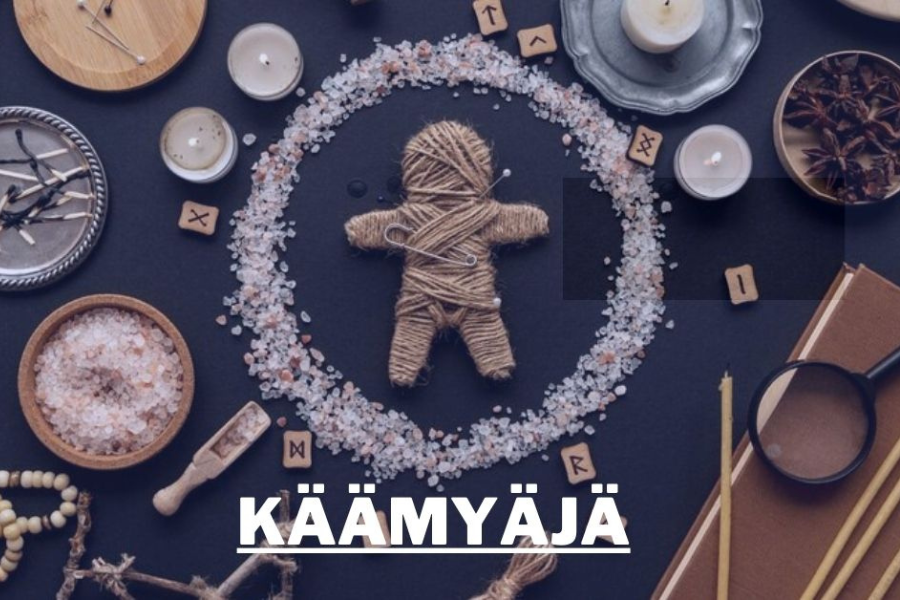
käämyäjä
Introduction
In the captivating tapestry of global traditions, some cultural practices stand out for their uniqueness and depth. One such fascinating phenomenon is käämyäjä, a traditional Finnish art form steeped in history and significance. This rich art embodies the essence of Finnish culture and spirituality, transforming over time while continuing to resonate with people worldwide. In this article, we’ll explore the origins, evolution, craftsmanship, modern influences, community engagement, preservation challenges, and future prospects of käämyäjä.
Origins and Cultural Significance
The term käämyäjä has its roots in ancient Finnish ceremonies, where it carried profound spiritual meanings. Derived from the Finnish words “kaama” (to coil or twist) and “ja” (an artist or craftsperson), käämyäjä is not merely an art form; it embodies a broader narrative of cultural identity, community values, and historical storytelling.
Historically, käämyäjä was integral to Finnish rituals, serving as a medium for expressing symbolic messages tied to spirituality and community ideals. These artistic expressions were not just aesthetic displays; they played a crucial role in preserving Finnish heritage. The ceremonial aspects of käämyäjä acted as a bridge between generations, ensuring that cultural narratives and practices were passed down, enriching Finnish society and fostering a sense of belonging.
The multifaceted meaning of käämyäjä encapsulates Finnish identity, offering insights into their worldview and the importance they place on tradition, spirituality, and community cohesion.
Evolution of Käämyäjä
Käämyäjä has undergone significant transformations since its inception. Originally, it encompassed simple sculptures and ritual objects, but over time, it evolved into a diverse array of artistic forms. This evolution highlights the adaptability of käämyäjä, reflecting the complexities of Finnish culture.
Initially used primarily in religious and spiritual contexts, käämyäjä began to permeate various aspects of everyday life, from home décor to functional items. This shift not only showcases the art form’s resilience but also illustrates the interplay between tradition and innovation within Finnish society.
As käämyäjä evolved, it began to incorporate modern aesthetics while preserving its traditional roots. Contemporary interpretations now blend historical techniques with innovative designs, making käämyäjä more accessible to a broader audience. This evolution serves as a testament to the art form’s enduring relevance in a rapidly changing world.
Craftsmanship and Symbolism
The artistry involved in creating käämyäjä pieces is marked by meticulous craftsmanship, reflecting the dedication of skilled artisans who strive to keep this tradition alive. Each piece undergoes a rigorous process, from selecting the right materials to intricately assembling complex patterns.
Artisans typically utilize traditional materials such as bone, leather, and wood, employing techniques handed down through generations. This craftsmanship not only ensures authenticity and high quality but also imbues each piece with profound symbolic significance. Every detail, from brushstrokes to color choices, carries deeper meanings connected to Finnish culture.
The intricate patterns and motifs found in käämyäjä often narrate stories from Finnish mythology, folklore, and spiritual beliefs. These narratives are essential for preserving cultural knowledge and passing it on to future generations, allowing individuals to connect with their heritage through this artistic expression.
Modern Influences and Contemporary Interpretations
In today’s world, käämyäjä has embraced contemporary influences while remaining anchored in its traditional roots. Modern artists experiment with new materials and techniques, breathing fresh life into this ancient art form. The blend of tradition and modern creativity enriches the narrative of käämyäjä, making it more relevant in contemporary culture.
Traditional käämyäjä pieces still hold immense cultural and historical value, but contemporary artists are exploring innovative avenues for self-expression within this framework. New styles are emerging, combining age-old methods with modern aesthetics, appealing to diverse audiences while maintaining the spirit of the original art form.
Moreover, advancements in technology have facilitated the global dissemination of käämyäjä, allowing enthusiasts from around the world to engage with and appreciate this unique art form. This increased accessibility fosters a deeper understanding and appreciation of Finnish culture on a global scale.
Community Engagement and Social Cooperation
Käämyäjä plays a vital role in fostering community engagement and social cooperation in Finnish villages. This art form encourages collaboration among individuals of all ages, creating a shared sense of identity and belonging. Communities come together to celebrate and preserve their cultural heritage, strengthening social bonds.
Workshops and gatherings in rural areas provide opportunities for people to learn from one another, share knowledge, and engage in the celebration of traditional practices. These communal events not only help sustain the käämyäjä tradition but also instill a sense of pride and belonging within the community.
Additionally, various organizations and institutions are dedicated to promoting awareness of käämyäjä. These entities organize exhibitions, workshops, and educational programs to cultivate interest in the art form, ensuring its longevity for future generations.
Challenges and Preservation Efforts
Despite its rich history, käämyäjä faces challenges in the modern world. Factors such as economic changes, urbanization, and the need for cultural preservation pose threats to the continuation of this beloved art form. However, passionate communities and organizations are taking proactive measures to safeguard käämyäjä.
One significant challenge is the diminishing number of skilled artisans capable of carrying on the tradition. To address this issue, training programs have been established to encourage and equip aspiring craftsmen with the necessary skills and knowledge. These initiatives are crucial for ensuring that the artistry and techniques associated with käämyäjä are preserved for future generations.
Additionally, efforts are underway to digitize and catalog existing käämyäjä artifacts, making them more accessible to a wider audience and safeguarding them for posterity. By raising awareness about the importance of käämyäjä and encouraging community involvement, stakeholders can work together to protect this vital aspect of Finnish culture.
Continued Evolution and Future Prospects
In the hands of contemporary artists, käämyäjä continues to evolve, incorporating new ideas and meanings into its narrative. This dynamic interplay between the past and present underscores the enduring strength of cultural expression, highlighting the relevance of käämyäjä in today’s world.
While the challenges facing käämyäjä are significant, they are not insurmountable. By fostering collaboration, innovation, and community engagement, stakeholders can ensure that this art form remains a vibrant and essential part of Finnish culture for generations to come.
Conclusion
In conclusion, käämyäjä stands as a powerful testament to the resilience of cultural expression. This art form weaves a rich narrative of history, innovation, and community, reflecting the enduring spirit of Finnish heritage. As we admire the beauty of käämyäjä, it is vital to recognize the importance of preserving and honoring the diverse cultural traditions it embodies. Through collective efforts and a commitment to sustainability, käämyäjä can thrive, continuing to inspire and connect people across the globe.
FAQs
1. What is käämyäjä?
Käämyäjä is a traditional Finnish art form that embodies rich cultural heritage and history. The term comes from the Finnish words “kaama,” meaning “to coil or twist,” and “ja,” referring to an artist or craftsperson. It symbolizes not only artistic expression but also spiritual and community values.
2. What are the origins of käämyäjä?
Käämyäjä has its roots in ancient Finnish ceremonies and rituals, where it played a significant spiritual role. It evolved from simple ceremonial objects into diverse forms of art that reflect Finnish culture and traditions.
3. How has käämyäjä evolved over time?
Initially focused on religious and spiritual rituals, käämyäjä has transformed into everyday art. Its evolution reflects the adaptability of Finnish culture, showcasing how traditional art can coexist with modern influences while retaining its essence.
4. What materials are typically used in käämyäjä craftsmanship?
Käämyäjä artisans traditionally use materials such as bone, leather, and wood. The craftsmanship involves meticulous techniques passed down through generations, ensuring authenticity and cultural significance in each piece.
5. What is the significance of the designs and motifs in käämyäjä art?
The designs and motifs in käämyäjä pieces often depict stories from Finnish mythology, folklore, and spiritual beliefs. Each element carries deep symbolic meaning, contributing to the cultural value and heritage embedded in the artwork.
6. How is käämyäjä celebrated in modern times?
Today, käämyäjä continues to thrive as contemporary artists incorporate new materials and techniques, blending traditional practices with modern aesthetics. Workshops, exhibitions, and community gatherings promote awareness and appreciation of this art form.
7. What challenges does käämyäjä face in preserving its tradition?
Käämyäjä faces challenges such as economic changes, declining interest among younger generations, and the limited number of skilled artisans. Efforts are underway to address these issues through education, training programs, and community engagement.
8. How can people contribute to the preservation of käämyäjä?
Individuals can help preserve käämyäjä by participating in workshops, supporting local artisans, and advocating for cultural heritage awareness. Engaging with organizations dedicated to this art form also plays a crucial role in ensuring its continuity.
9. Is käämyäjä recognized internationally?
While käämyäjä is rooted in Finnish culture, it is gaining international recognition as artists and enthusiasts from around the world engage with and appreciate this unique art form. Exhibitions and online platforms are expanding its reach beyond traditional boundaries.
10. How does käämyäjä reflect Finnish identity?
Käämyäjä embodies the essence of Finnish identity, showcasing the community’s values, history, and artistic expression. It serves as a reminder of the importance of cultural heritage and the connection between the past and present in shaping a nation’s identity.
Uncover juicy celebrity rumors and entertainment updates on chicagoreader.






